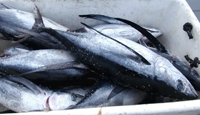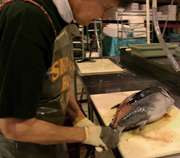As Americans head to the polls in 2024, the very future of our country is at stake. At HuffPost, we believe that a free press is critical to creating well-informed voters. That's why our journalism is free for everyone, even though other newsrooms retreat behind expensive paywalls.
Our journalists will continue to cover the twists and turns during this historic presidential election. With your help, we'll bring you hard-hitting investigations, well-researched analysis and timely takes you can't find elsewhere. Reporting in this current political climate is a responsibility we do not take lightly, and we thank you for your support.
Contribute as little as $2 to keep our news free for all.
Can't afford to donate? Support HuffPost by creating a free account and log in while you read.
The 2024 election is heating up, and women's rights, health care, voting rights, and the very future of democracy are all at stake. Donald Trump will face Joe Biden in the most consequential vote of our time. And HuffPost will be there, covering every twist and turn. America's future hangs in the balance. Would you consider contributing to support our journalism and keep it free for all during this critical season?
HuffPost believes news should be accessible to everyone, regardless of their ability to pay for it. We rely on readers like you to help fund our work. Any contribution you can make — even as little as $2 — goes directly toward supporting the impactful journalism that we will continue to produce this year. Thank you for being part of our story.
Can't afford to donate? Support HuffPost by creating a free account and log in while you read.
It's official: Donald Trump will face Joe Biden this fall in the presidential election. As we face the most consequential presidential election of our time, HuffPost is committed to bringing you up-to-date, accurate news about the 2024 race. While other outlets have retreated behind paywalls, you can trust our news will stay free.
But we can't do it without your help. Reader funding is one of the key ways we support our newsroom. Would you consider making a donation to help fund our news during this critical time? Your contributions are vital to supporting a free press.
Contribute as little as $2 to keep our journalism free and accessible to all.
Can't afford to donate? Support HuffPost by creating a free account and log in while you read.
As Americans head to the polls in 2024, the very future of our country is at stake. At HuffPost, we believe that a free press is critical to creating well-informed voters. That's why our journalism is free for everyone, even though other newsrooms retreat behind expensive paywalls.
Our journalists will continue to cover the twists and turns during this historic presidential election. With your help, we'll bring you hard-hitting investigations, well-researched analysis and timely takes you can't find elsewhere. Reporting in this current political climate is a responsibility we do not take lightly, and we thank you for your support.
Contribute as little as $2 to keep our news free for all.
Can't afford to donate? Support HuffPost by creating a free account and log in while you read.
Dear HuffPost Reader
Thank you for your past contribution to HuffPost. We are sincerely grateful for readers like you who help us ensure that we can keep our journalism free for everyone.
The stakes are high this year, and our 2024 coverage could use continued support. Would you consider becoming a regular HuffPost contributor?
Dear HuffPost Reader
Thank you for your past contribution to HuffPost. We are sincerely grateful for readers like you who help us ensure that we can keep our journalism free for everyone.
The stakes are high this year, and our 2024 coverage could use continued support. If circumstances have changed since you last contributed, we hope you'll consider contributing to HuffPost once more.

 They buy most of their albacore from local fisherman who catch the fish one at a time using the hook-and-line method. This type of fishing eliminates by-catch, the unintended harvesting of other species, which has earned the West Coast albacore fishery the certification as sustainable by the Marine Stewardship Council (MSC). Certification has been important, Mark said, "so people can feel comfortable that it's not depleting large numbers of the species."
They buy most of their albacore from local fisherman who catch the fish one at a time using the hook-and-line method. This type of fishing eliminates by-catch, the unintended harvesting of other species, which has earned the West Coast albacore fishery the certification as sustainable by the Marine Stewardship Council (MSC). Certification has been important, Mark said, "so people can feel comfortable that it's not depleting large numbers of the species." Once the albacore is brought into the cannery, the loins are filleted and cleaned by a small crew who've been working for the family for decades. As you'll see in the video, the fresh loins are then sliced, hand-packed into cans with two salt pellets and sent through the ancient canning machine. The wire cage holding the cans is lifted into a large pressure cooker that cooks the fish, which means the fish cooks in its own juice without needing oil or water to keep it moist.
Once the albacore is brought into the cannery, the loins are filleted and cleaned by a small crew who've been working for the family for decades. As you'll see in the video, the fresh loins are then sliced, hand-packed into cans with two salt pellets and sent through the ancient canning machine. The wire cage holding the cans is lifted into a large pressure cooker that cooks the fish, which means the fish cooks in its own juice without needing oil or water to keep it moist.